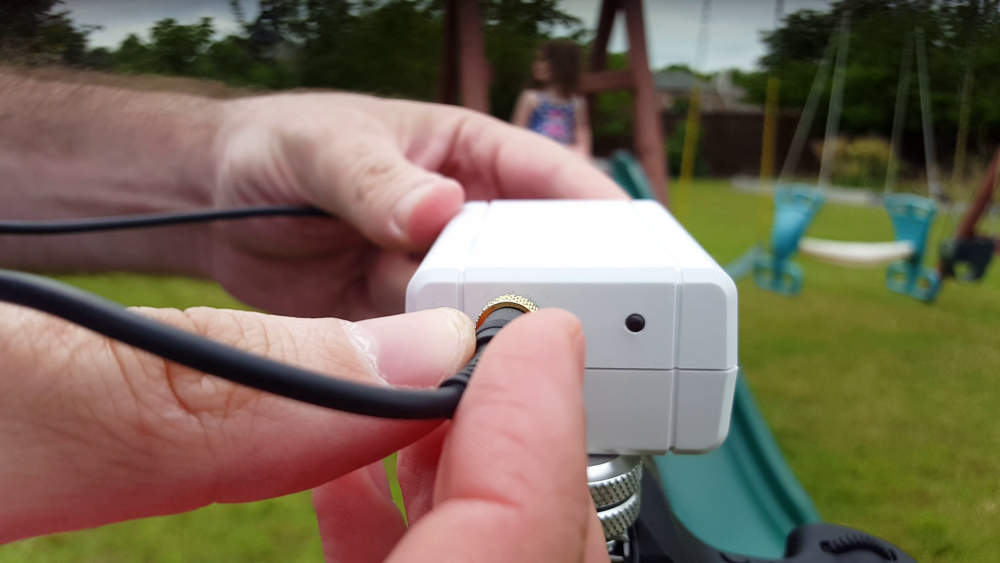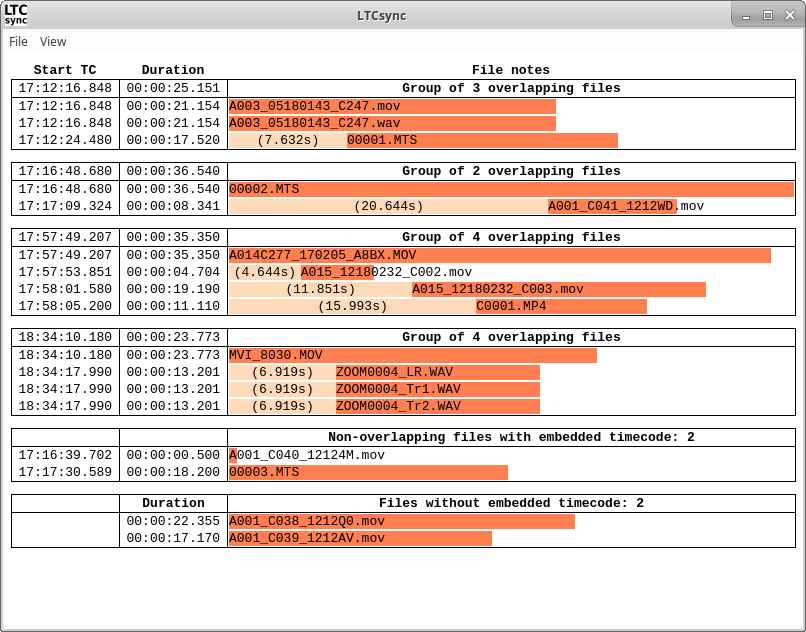-
Posts
10 -
Joined
-
Last visited
Profile Information
-
Location
Dallas, TX
-
About
Head of development at a technology startup
-
Interested in Sound for Picture
Yes
Recent Profile Visitors
The recent visitors block is disabled and is not being shown to other users.
-
Thank you! That's all I ask from this version :=)
-
Thanks, @chrismedr. It was a big surprise to me that this didn't exist yet, and a bigger surprise that camera manufacturers didn't offer this functionality. The irony is that many cameras already have GPS onboard, but they don't use it for time! The idea isn't new at all. I've seen records of hobbyists and prominent manufacturers tinkering with the idea over the years. Like @Bouke and @Klaus say, the details are what's hard. Finding the exact start of a UTC second is hard. Dealing with leap seconds is hard. Translating between UTC and 30/1.001 timebases is hard. So my claim is only that I did the grunt work of engineering and testing the solutions to these issues. I think my angle is different from a lot of other vendors. My goal is to build a TC device that anyone can use. I've met so many people who told me TC was too complex for them. Or they say they tried it once and it didn't work and they were worse off then without it and post was even more awful than usual. I want to build a TC generator that a PA can't screw up when they are trying to be helpful. Using a satellite time signal is simply a way to get a consistent, reliable, replicable way to get all clocks on a set on the same time. And as a side effect, ALL dish clocks in the world are on the same time. All the other design choices in DISH come from the same place--how can I build a device that people who aren't sound engineers can't misconfigure.
-
Hi. I'm Ari Krupnik, the designer of DISH.TC . It flatters me that my idea came up in a thread titled "Future of Timecode." I'm happy to answer any questions you may have about DISH. As some of you know, we just launched a Kickstarter for DISH. This page has a lot more information, videos and thoughts from people who've used our prototypes: https://www.kickstarter.com/projects/ari-krupnik/dish-timecode-sync-by-satellite
-
We launched the Kickstarter for DISH today. The production DISH is smaller than earlier prototypes, but we stayed with a rectangular shape. DISH includes an onboard TCXO. If you lose satellite signal, it will keep going. If it drifts too far out of spec and hasn't seen a good signal in a while, it will tell you. DISH runs on 2 AAs. A pair of high-quality AAs lasts over 40 hours. We recommend rechargeable AAs. DISH is a zero-configuration device. There are no settings to confuse the operator. I'm sure that everyone on this forum knows how to configure a TC generator. I'm also sure that everyone on this forum has met PAs, ADs, ACs and many other people who screwed up perfectly good TC setups because they wanted to fiddle with the knobs. DISH has no knobs to fiddle with. Kickstarter early bird pricing is $169 for one / $329 for a pair. Retail projected at $260. Please consider sharing this link with other filmmakers: https://www.kickstarter.com/projects/ari-krupnik/dish-timecode-sync-by-satellite
-
Yes, Sir. Thank you for asking. I don't care about GPS per se. I want a sync system that anyone can operate. I want a system I can hand out to camera ops and not have to babysit them. I want a system that's literally plug-and-play. To keep multiple devices in sync, I need a master clock and a radio transmitter. Conveniently, the US, Russian, European and Chinese governments have put very accurate clocks in orbit and outfitted them with powerful transmitters. I'm simply taking advantage of that. About 32,786,667, which for practical purposes is infinite. The boom being 40 feet away from the camera is exactly the problem if you're syncing by sound. Pluraleyes will align the two clips so that sound on the camera mic and the boom mic are in sync, but the camera sound starts out a frame behind the video. This is assuming the boom is plugged into a separate sound recorder. If the boom is wired directly into the camera with a 40-foot cable, you don't need to sync anything--your video and audio are already in the same file.
-
Bill Bennett tweeted about Dish.TC hardware:
-
Thank you, Bouke. I know a lot of people who use Tentacles. It's a good product. It takes an esoteric area of production and makes it accessible to anyone. It reduces the amount of manual labor that goes into producing film. I like that. I think my understanding of the market is different from Ulrich and Max's. They have the benefit of experience, so it's very likely that their understanding is correct. What I see is a golden age of indie film. Anybody can own a camera now, and produce content. So if you're willing to work with people who are new to film, it's a growth market. It's as hard as ever to sell a $100,000 camera. But the market for $1000 cameras is booming. I believe same is true of peripheral equipment like timecode. Posting here, and asking for feedback on my work, is one way I'm trying to test my hypothesis. I'd like to hear more about your ideas for cooperation. You can email me ari [at] dish.tc
-
iter changed their profile photo
-
Wow guys, thank you for the feedback. My worry was that no on would be interested, but instead I get a whole discussion! @Constantin: indeed, there is no such thing as a free lunch. I am developing a hardware timecode generator. It's a little early to talk about it, but the basic idea is that it takes public radio signals from satellites in orbit to generate very precise time that never drifts. To make it easier for potential users to adopt my hardware, I am developing my own software utility. Hardware costs a lot of money and time to develop, so in the first instance I'm testing the market with software. As @Vincent R. is pointing out, my app builds on other open-source software, so I'm making it open source as well. I don't think of it as undercutting prices--more like sending the elevator back down. I've used a lot of open-source software in my career, and I want to contribute back to the community. My long-term hardware plans notwithstanding, I want LTCsync to be a useful tool with any vendors' code. There are some excellent products on the market, and I hope people will continue using them. Even if I never end up shipping hardware, or if my hardware fails in the market, I want the software to be useful to people who have to sync. As Vincent points out, making the source available allows others to adapt the program to their use. @Philip Perkins: your questions are exactly the questions I have. I want to hear what people find useful in the real world, so I don't waste my time on useless features. As it stands now, the app is standalone. It is possible to make it into a plugin for Premiere or Final Cut, but that's a lot of work and impractical for now. As a standalone app, it can do any of the things you describe, plus a few others. My initial idea was to generate synced copies of original files (e.g., take the video stream from the camera file, take teh audio stream(s) from the sound recorder, minus the LTC track, and combine that into a single file). One objection I hear is that it takes a log time (it does) and it fills up your disk (it does). Of course it also doesn't work for multi-camera setups. I'm curious how people here feel about these drawbacks, and if they have other preferences for output. To answer your other question, yes, I can deal with any number of channels in an audio stream, and any number of streams in a file. Try it! @Bouke: thank you for your feedback. I never expected to hear from you, and so quickly! It's a very small market. I don't want to step on your toes. You have many loyal customers who will continue to use LTC Convert, and I think they should! Your software is much more elaborate than mine and has many features which I probably don't even understand--much less am able to replicate. My big constraint is that I can't tell my hardware customers, "Thank you for giving me your money. Now give more money to Tentacle or Video Tool Shed for software." And if I'm going to write a utility for them to use, I can't afford to write it from scratch--it will be full of bugs. So I'm going to have to base it on open-source libraries, and in turn make the utility open-source... But I think in general you and I are trying to address different market segments. I'm targeting more of the entry-level, first-time users who are just learning about timecode and sync. This said, if there's anything I can do to be a better neighbor, please let me know. @Vincent R.: Thank you for your enthusiasm! I am developing on Linux, so it's extremely helpful to have someone use the software on a Mac. It looks like you were able to build the Electron package on your machine. That's wonderful! I am looking for more feedback on what works and what's broken. I agree with Bouke that the general case of generating Adobe/Apple XML takes more than a couple of days. It is clearly possible to do, but would take a little more effort. Part of the reason is that their XML formats are so complicated in the first place. If I could generate my own XML, for my own NLE that understood my format, I could do that in half a day :=) So for now, I'm trying to understand what the most useful/cheapest output solution is for right now. Ari.
-
Hi. I'm new here. I'm looking for feedback on an idea I'm developing. I'm working on a free, open-source app that syncs files based on LTC. If you're familiar with Tentacle Studio or Tentacle Timecode Tool, my app addresses a similar need, but is cross-platform and free. I'm in early stages of development. I am looking for feedback on how the software works in the real world, so I can focus my efforts on what works for real people. LTCsync runs on Windows, MacOS and Linux. You can download a build for your OS from https://github.com/arikrupnik/ltcsync/releases/tag/0.1.1 Project home is https://github.com/arikrupnik/ltcsync





